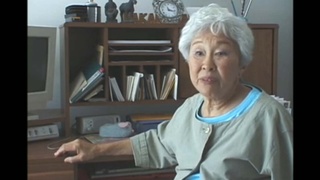Interviews
Classified 4C - enemy alien
It was in January of ’42. I volunteered for the United States Air Force. And the requirements at that time were you had to have one year of college, which I just had. And had to pass a written examination and then the physical and so I was ready to be inducted and I went out to the air base and at that time, they rejected me because of my background, my ancestry. I appealed this rejection with my attorney – a fellow by the name of Paul Patterson, who was in Hillsboro and I’d known his because of our dealings in the past. Paul Patterson later became the governor of Oregon. He appealed for me, but it didn’t do any good. I was classified 4C the rest of the years.
I*: And 4C stands for?
Yeah.
I: What does 4C stand for?
Oh, it’s enemy alien.
* “I” indicates an interviewer (Akemi Kikumura Yano).
Date: December 6, 2005
Location: Oregon, US
Interviewer: Akemi Kikumura Yano
Contributed by: Watase Media Arts Center, Japanese American National Museum.






